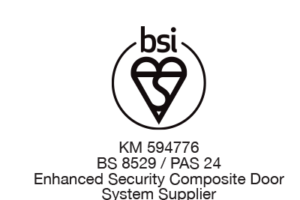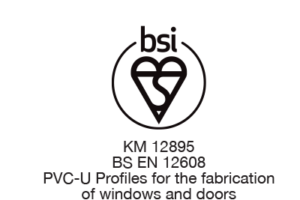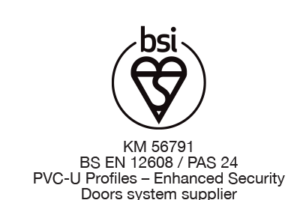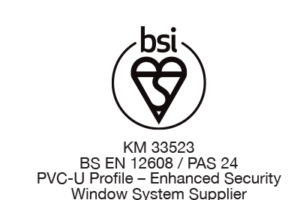








Thank you to www.habmonline.co.uk for allowing us to publish the following article.
Iain Aubusson finds out how Solihull Community Housing is undertaking an ambitious scheme to modernise 37 high-rise buildings, using external wall insulation, biomass district heating and an innovative system that allows new windows to be fitted from the inside.
With 37 high-rise buildings within its remit, Solihull Community Housing (SCH) is responsible for the upkeep of more than 1% of the UK’s entire high-rise stock. Part of a stock of 11,000 properties that SCH manages and maintains on behalf of Solihull Council, they were predominantly built during the 1950s and 1960s, using now-obsolete methods such as Bison and No-fines construction.
Although they were still in generally good condition, future maintenance posed a growing challenge for SCH. It was also increasingly difficult for residents to heat their homes affordably, leaving them vulnerable to fuel poverty. With so many residents struggling to heat their homes effectively, SCH knew that an ambitious and wide-ranging refurbishment programme would be required, including improvements not just to heating systems but also to the fabric of the buildings themselves.
To achieve this SCH is working in partnership with British Gas to deliver energy efficiency measures to more than 2,000 tenants. The £27 million energy conservation project falls under the Energy Companies Obligation (ECO) scheme and is one of the first on this scale to be announced by British Gas in the UK, with the energy provider having worked in partnership with SCH and Solihull Council for ten years on various obligation schemes.
To deliver the project, SCH assembled a team that is led by project manager Brian King. “SCH set up a small department of people with specific skill sets to manage a very high-speed, high-density, high-rise refurbishment programme,” explains Brian. “The team consists of myself, a project officer, a clerk of works and a customer liaison officer. We look after access, communications, process management, quality management, fire integrity, financial management and CDM.
“We’re installing external wall insulation (EWI) on 32 buildings and biomass heating systems in up to 26 of the buildings, depending on funding. We initially received CESP funding, allowing us to undertake a pilot on two of our high-rise dwellings. This helped us to learn about some of the challenges involved with installing EWI and biomass, including the impact on our residents, which communication methods worked best and how to manage the quality of the installation.
“The scheme is improving the appearance of the buildings and lifting the area, while reducing the ongoing maintenance costs. It will improve energy efficiency for the residents and we’re increasing the projected life of the buildings by more than 35 years.”
Taking into account the cumulative benefits of the EWI and the biomass heating systems, the whole project is expected to achieve a carbon reduction of at least 70,000 metric tonnes over its lifetime. Another significant upgrade that will contribute to the energy efficiency of the buildings is the installation of new windows throughout.
A window replacement programme on this scale – and on high-rise buildings especially – would normally represent an astronomical undertaking, incurring huge installation costs. However, SCH and its supplier and contractor partners have worked together to devise an innovative solution that allows all new windows to be installed from the inside. As well as removing the need for prohibitively expensive scaffolding, the system is cleverly designed to allow windows to be fitted without damaging the insulation or the new render.
Ordinarily, new windows would need to be in place before the external work takes place, but the window design has allowed SCH to go ahead with the full EWI programme – making sure that all buildings fell within the tight time constraints dictated by the ECO scheme – safe in the knowledge that the windows can be fitted later. This option to stagger the window replacement programme over a longer period of time has also helped SCH manage its costs and ensure that the scheme is viable.
“One of the advantages is that we are not constrained financially to completing the works before the EWI takes place, which is a massive benefit when you have so many high-rise buildings,” explains Brian. “We couldn’t conceivably fund replacing all the windows on all the buildings just because we are doing EWI. With the new design, we can go into any apartment, before or after EWI, and replace windows – so we can improve the warmth, reduce the draughts and the cold bridging, and ensure that the homes are weather-proof and the residents are more comfortable and secure. In terms of financial management for a housing association, being able to call off windows either by building, by apartment or by window is massively flexible compared to trying to do it all before you install the EWI.”
The internal fitting system that offered SCH this flexibility was the result of a collaboration between the contractor, Berben Installations, and supplier Profile 22. Paul Tunley, managing director of Berben, explains how the system works: “Essentially what we’ve been able to do is manufacture a window with an odd leg frame, which the installation guys can angle through the existing opening, pull back onto the face of the existing frame and clamp – so we get very good seals and weather performance. They then fix and foam-seal the perimeter to give additional fixing stability and also eliminate any cold flow between the old frame and the new window.
“We set out to keep things simple – and there’s nothing more simple than just a top-hung casement window. There’s very little to go wrong, it’s quite easy to maintain and if anything does fail it’s easy to put things right. That was the philosophy behind the design we’ve gone for.
“What you come up against in a lot of high-rise properties is a lot of pivot and tilt-before-turn windows – which, unless they’re well maintained over a long period of time, do start to break down through misuse. On a lot of the properties we’d get quite a variation in the existing frames. In any given building the design may not be the same – we look at it on a building-to-building basis and see what we’re up against. We’ve also been able to send all the old PVC windows to a recycling plant,” adds Paul.
Key to the success of the product was to perfect a design that would enhance the energy efficiency of the buildings and allow for internal fitting while giving the appearance of a normal, brand new system. Profile 22’s technical manager, Gary Millership, explains: “It was a challenge to get the U-values as low as possible, but at reasonable cost. We’ve managed to get most of the installations down to a U-value of at least 1.4. The inside of the window is fully trimmed, so the perception when you walk in is that they’ve had completely new windows. We’ve had quite a few councils and housing associations visit the project to see what we’ve been able to achieve – and they can’t believe it’s not a completely new installation.”
Brian King agrees that many housing associations stand to benefit from the development of systems offering this level of installation flexibility: “The windows on these buildings can be up to 20 years old. Originally there was an expectation that UPVC would last for more than 25 years, but the original designs were nothing like as clever as they are today and that was totally unrealistic – particularly in terms of the U-values and the cold bridging – and even the mechanisms on the old windows, which break down and can’t be replicated.
“Modern window designs deliver warmer homes and greater reliability. There are a lot of housing associations in the same situation as us that are looking for solutions – we’ve had visits from nine housing associations now, and they are all interested in this as a solution. It has created a little bit of a stir.
“The experience of Profile 22 and Berben has been invaluable. The trickle vents are a good example – they’ve come up with one that doesn’t allow wind noise, which in high-rise buildings is quite a feat. A lot of good advice has gone into this project. We’ve now completed ten buildings with windows fitted from the inside. Residents love them and you can see the quality of the installation and the finish,” says Brian.
With the windows and the EWI combining to create a much more thermally efficient envelope for each of the high-rise buildings, the installation of biomass district heating systems is helping to maximise the energy efficiency benefits for residents. SCH has also taken the opportunity to undertake additional improvements to the functionality and appearance of the buildings, as Brian explains: “We’ve upgraded the lightning protection system and the digital TV – getting rid of all the satellite dishes on the outside of the buildings. There are also new lobby doors, new exterior lighting and new stainless steel bin room doors.
“Having done the EWI, the reports we’re getting back from the residents are incredible. They love it – they’re comfortable and have more control over their heating and bills. They’re very pleased indeed.
“Our intention is to leave these buildings and not have to go back with significant maintenance and repair issues for 25 years. That’s why our specifications are so robust. Everything we’re doing is to raise homes to a standard that gives our tenants comfort, security and makes the buildings weatherproof while requiring almost non-existent future maintenance. If we achieve that, it’s good for everybody,” concludes Brian.